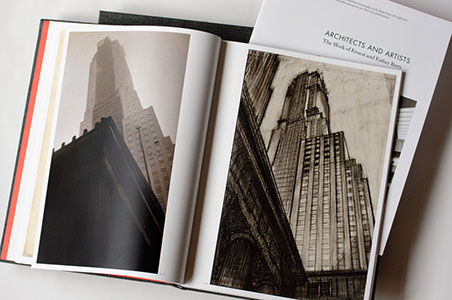With the passing of summer, we are likely to see fewer camera-toting tourists on our ferries. But the ubiquity of snaps and selfies-even among veteran ferry commuters-will not simply fade into the Bay's mystic autumnal haze.

Several exceptional performances were staged at the Merola Opera Programís 2015 Grand Finale last month. Photo courtesy of Merola Opera
By Paul Duclos
Published: September, 2015
We found one chapter, “Stalking Chance and Making News,” especially compelling. In it, the author observes that Carl Jung had popularized the notion of synchronization. Here, ostensibly random events could momentarily reveal the profound embedding of the individual psyche in the world.
Although this proneness to chance may amuse the casual photographer, Kelsey points out that historically it has been a mixed blessing for those seeking to make photographic art. On the one hand, it has weakened the bond between maker and picture, calling into question what a photograph can be said to say.
On the other hand, it has given photography an extraordinary capacity to represent the unpredictable dynamism of modern life. By delving into these matters, Photography and the Art of Chance transforms our understanding of photography and the work of some of its most brilliant practitioners.
The effort to make photographic art has involved a call and response across generations. From the introduction of photography in 1839 to the end of the analog era, practitioners such as William Henry Fox Talbot, Julia Margaret Cameron, Alfred Stieglitz, Frederick Sommer and John Baldessari built upon and critiqued one another’s work in their struggle to reconcile aesthetic aspiration and mechanical process. The root problem was the technology’s indifference, its insistence on giving a bucket the same attention as a bishop and capturing whatever wandered before the lens.
Could such an automatic mechanism accommodate imagination? Could it make art? Photography and the Art of Chance reveals how daring innovators expanded the aesthetic limits of photography to create art for a modern world.
For more info, see www.hup.harvard.edu.
Quite another take on photography is proved by Architects and Artists: The Work of Ernest and Esther Born by Nicholas Olsberg, available now at the Book Club of California.
At once a serious contribution to the literature on modern architecture and design and a rich and varied visual feast, this publication makes evident the legendary draftsmanship and graphic inventiveness of Ernest Born and rediscovers the brilliant photographic eye of Esther Born. Drawing from visual collections throughout North America and Europe, the publication is richly illustrated, including many full-page reproductions of works from the Borns’ long and varied careers.
Architects and Artists: The Work of Ernest and Esther Born is printed in an edition of 300 numbered copies. Designed by Michi Toki of Toki Design in San Francisco, the book measures 12 by 9 inches and consists of 264 pages. The slipcase and book are bound in cloth over boards. The price is $325 (plus applicable sales tax and shipping).
The book’s publication date is October 15. For more info, see www.bccbooks.org.
Several exceptional performances were staged at the Merola Opera Program’s 2015 Grand Finale last month. We were especially impressed with the South Korean baritone Sol Jin, who made for a powerful Prince Yeletsky in Tchaikovsky’s The Queen of Spades. Merola Apprentice Stage Director Mo Zhou should also be praised for keeping the action flowing and well balanced.
Next month, Cultural Currents will feature an interview with SF Opera General Director David Gockley.
http://paulduclosonsanfranciscoculture.blogspot.mx/

Architects and Artists: The Work of Ernest and Esther Born by Nicholas Olsberg. Photo courtesy of Book Club of California

